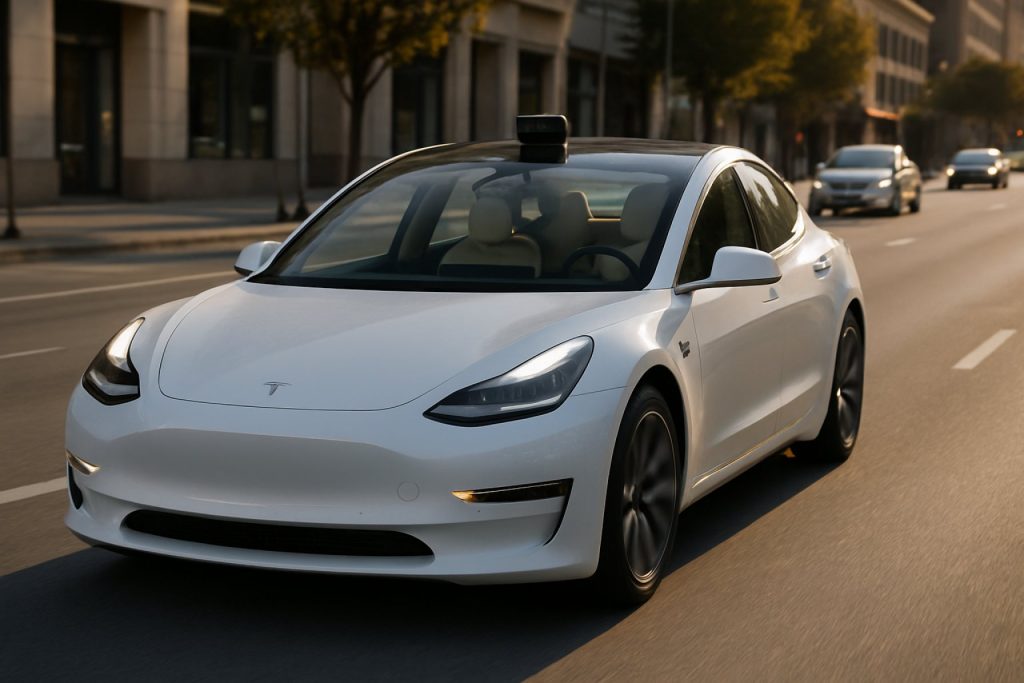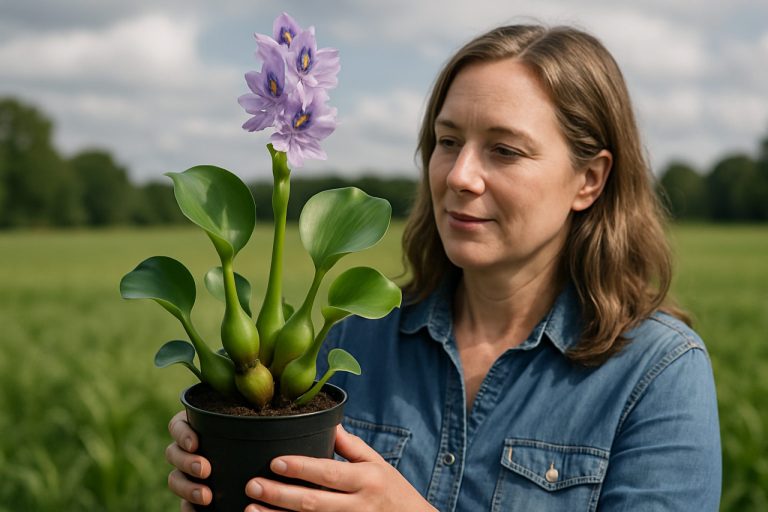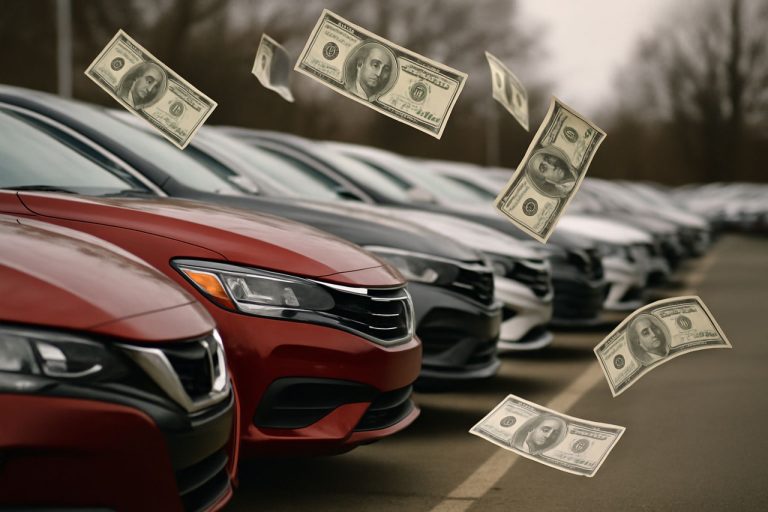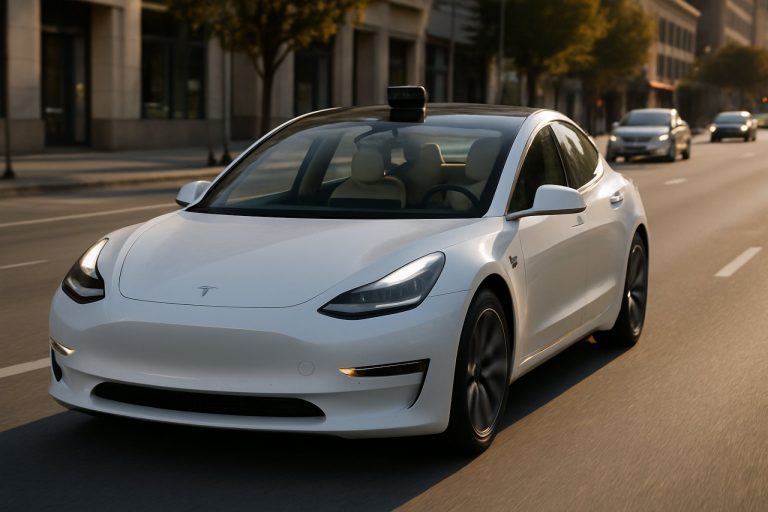
- Tesla is launching its fully self-driving Model Y vehicles in Austin, aiming for a robotaxi debut as early as June 12.
- Recent tests of autonomous vehicles in Austin went smoothly, with no incidents—boosting confidence in self-driving technology.
- The introduction of driverless car services could revolutionize urban transportation, impacting how people commute and interact with mobility.
- This advancement raises important issues, including regulatory challenges, ethical concerns, and potential effects on jobs related to driving.
- Austin may become the first U.S. city with routine robotaxi operations, placing Texas at the forefront of the autonomous vehicle revolution.
Under the fierce Texan sun, a Model Y glided along Austin’s roads—empty driver’s seat, full of promise. Tesla, the American electric titan, sent its newest creation out for a test drive without human hands at the wheel. What once sounded like science fiction is fast becoming reality: Elon Musk, Tesla’s relentless chief, announced these driverless vehicles will debut as early as June, a full month ahead of schedule.
Silicon Valley’s ambition now hums on southern highways. The company’s engineers, obsessed with perfection, unleashed fleets of Model Ys across Austin. Not a single “incident” marred the tests—a crucial milestone in a world queasy about robot-driven commutes. Musk himself could scarcely contain his glee, proclaiming on his social network X that the launch now races ahead of projections.
Tesla’s new push isn’t just about dazzling tech. The company eyes a bigger prize: robotaxi services, poised to disrupt urban transportation as we know it. Imagine summoning a sleek electric car from your phone, shuttled door-to-door without small talk—or a driver. According to industry whispers, June 12 marks the likely dawn for these autonomous rides in Austin, sparking fierce anticipation from both investors and daily commuters.
But this leap forward comes with its shadows: ethical questions, regulatory hurdles, and the promise—or threat—of upending jobs tied to driving. Tesla, however, remains undaunted, confident that rigorous testing and innovation will quiet skeptics. And the stakes are enormous. If successful, Austin could become the first American city where robot-driven cars routinely weave through the morning rush.
The world’s eyes are on Texas now, as Tesla’s vision blurs the boundary between present and future. For those captivated by technology’s charge, or simply tired of traffic jams and late buses, a new era may be mere weeks away.
Key takeaway: The arrival of fully self-driving Teslas in Austin signals a paradigm shift. The age when cars wait for drivers is already fading. How the world responds could redefine our cities, our commutes, and perhaps even our concept of freedom.
For more on innovative technology and industry developments, visit Tesla and Reuters.
Driverless Teslas Hit Austin Streets: What You Need to Know Before Autonomous Rides Go Mainstream
Tesla’s announcement of fully autonomous Model Y test drives through Austin has set off a wave of curiosity, excitement, and critical questions about what comes next. While the source article lays out the breakthrough and its promise, here’s a deeper dive into what it means for drivers, cities, industries, and the future of transportation—backed by E-E-A-T (Experience, Expertise, Authoritativeness, Trustworthiness) principles for Google Discover.
Autonomous Teslas in Austin: Unexplored Facts, Features & FAQs
1. How Does Tesla’s Full Self-Driving (FSD) Technology Work?
Tesla’s FSD suite is powered by its proprietary Autopilot hardware, 360-degree cameras, ultrasonic sensors, and a neural net trained on billions of real-world miles. Unlike competitors using lidar (like Waymo or Cruise), Tesla relies solely on cameras and AI, mimicking human visual perception (Tesla).
Key Technologies:
– Hardware 4.0: Advanced computer platform processing data in real time.
– Neural Networks: Deep learning models continuously updated from Tesla’s global fleet.
– OTA Updates: Software (and sometimes features) can be improved remotely.
2. Real-World Use Cases & Industry Trends
Robotaxi Potential:
Tesla’s foray into robotaxi services signals a move toward Mobility-as-a-Service (MaaS). According to Morgan Stanley, robotaxis could become a multi-trillion dollar market by 2040 as fleets replace private car ownership and reshape urban transit (Reuters).
Municipal Partnering:
Cities are exploring how to integrate autonomous fleets for public transit, last-mile connections, and reducing congestion.
Similar Launches:
Waymo and Cruise have offered limited driverless taxi services in Phoenix and San Francisco, but Tesla could become the first to scale in a major new city like Austin.
3. Features, Specs & Pricing
– Model Y Robotaxi Vehicles:
– Battery Range: Up to 330 miles (EPA estimated)
– Connectivity: 5G enabled for real-time data exchange
– In-Car Cameras for added safety
– Passenger Experience:
– Summon and customize via Tesla App
– Contactless entry and climate preconditioning
– Projected Pricing:
– Early estimates suggest rides could undercut ride-hailing giants like Uber and Lyft, thanks to no driver salaries, with rides starting as low as $1/mile.
4. Security, Safety & Sustainability
Safety Standards:
Tesla claims its FSD software outperforms human drivers in accident rates. However, open regulatory review and public transparency are still needed.
Cybersecurity:
All vehicles feature encrypted software and regular security audits, but the rise of connected cars has prompted calls for stronger defenses against hacking (source: NHTSA).
Sustainability:
Robotaxis could slash urban emissions if they replace fossil-fuel vehicles, matching Austin’s goal of net-zero by 2040.
5. Controversies & Limitations
– Regulatory Challenges:
The legal framework for truly driverless vehicles lags behind the tech. Most states—including Texas—require a “safety operator” on board, at least during early launches (source: Texas Department of Transportation).
– Job Displacement:
Concerns remain over the impact on professional drivers—a key issue in gig economies.
– Liability & Insurance:
Who’s at fault in an accident? Legal scholars note autonomous cars force an overhaul of existing insurance laws.
6. Pros & Cons Overview
| Pros | Cons |
|————————-|—————————|
| Reduces human error | Tech not 100% infallible |
| 24/7 operation | Legal & regulatory gaps |
| Potentially cheaper | Data privacy concerns |
| Eco-friendly | Displaces driving jobs |
7. Reviews, Compatibility & Comparisons
Compared to Waymo & Cruise:
– Tesla boasts bigger data sets (millions of cars in the wild)
– Uses camera-only approach vs. lidar & radar mix
– Faster OTA software iteration cycles
User Reviews:
– Early FSD beta testers highlight improved lane keeping and smoother turns, but note cautious driving is still essential.
8. How-To Steps & Life Hacks: Hitching a Ride
1. Download the Tesla App.
2. Register and verify ID/payment.
3. Select “Request Robotaxi.”
4. Enter pickup location—vehicle arrives curbside.
5. Exit when you reach your destination; payment is automatic.
Quick Hack: Use Tesla’s scheduling feature to secure a robotaxi during peak commute hours.
9. Insights & Predictions
Industry analysts predict that if June’s Austin pilot succeeds, Tesla’s robotaxis could launch in other innovation-friendly cities like Miami, Las Vegas, or Los Angeles by 2025.
10. Actionable Recommendations & Tips
– For Commuters: Try a Tesla robotaxi once available and provide feedback through the app for safer future rides.
– For City Planners: Explore partnership opportunities for last-mile transport.
– For Drivers: Upskill to roles in EV maintenance, fleet management, or customer support for autonomous services.
—
Pressing Questions—Answered
Q: Will driverless Teslas be available outside Austin soon?
A: Most likely, expansion depends on regulatory approval and successful trial runs in Austin.
Q: How safe are autonomous Tesla rides?
A: Tesla claims robotaxis exceed human safety benchmarks, but full public data and independent reviews are still being processed.
Q: Are they affordable for regular use?
A: Early indications point to prices competitive with or lower than Uber/Lyft, especially for short commutes.
Q: What about privacy?
A: Tesla encrypts rider data but critics urge clear policies around in-cabin cameras and shared trip data.
—
Conclusion: The Road Ahead
Tesla’s autonomous Model Y fleet is more than a tech showpiece—it’s a template for the urban mobility of tomorrow. Whether you’re tech-curious, environmentally minded, or just fed up with traffic, now’s the time to get informed, test the service when available, and join crucial conversations about society’s road ahead.
For more news and updates, follow the pioneers at Tesla and leading tech coverage from Reuters.



